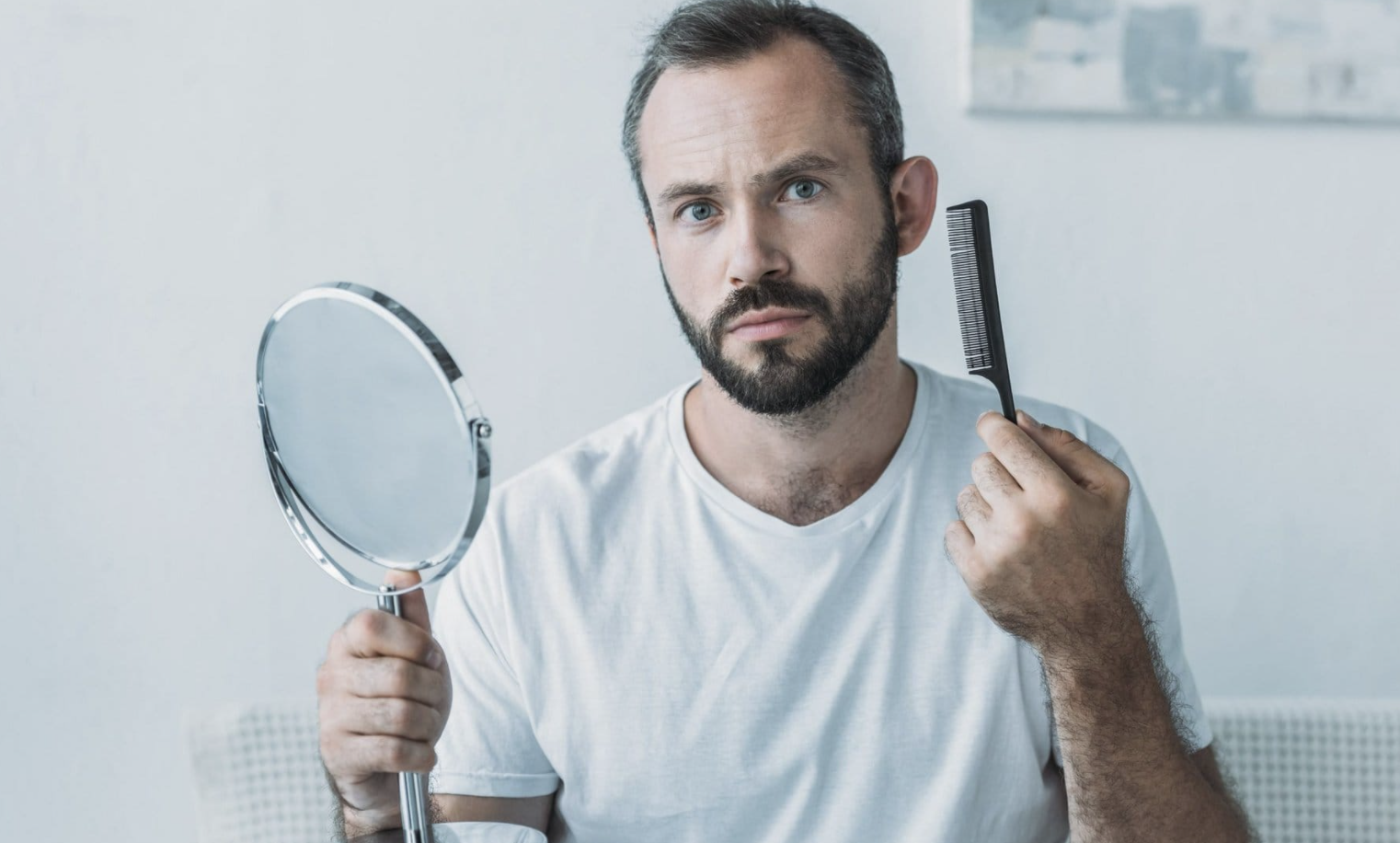
Losing a few hairs every day is totally fine, but if you’re facing excessive hair loss from some specific areas, chances are that you could be balding.
Hair loss or Alopecia can occur due to a number of reasons and to anyone. In fact, even celebrities are not safe from hair loss due to aging, but they’ve undergone treatments and hair transplants to keep the hair that they have.
You can see plenty of pictures of before and after of celebrity hair transplants to see the difference it makes. Just like these celebrities you can also get your hair loss treated by medication or just get a hair transplant which might be a slightly riskier option, but on the other hand it will be more permanent.
Regardless of how you treat it, the first step is identifying signs of your hair loss which is exactly what this article is about.
In addition to listing down the signs and symptoms, we’ll also be listing down the most effective treatments in the article below. So, let us get right into it.
Table of Contents
3 Most Common Signs of Balding
Nowadays, the term balding is used almost exclusively as an alternative to androgenetic alopecia, which is thought to be caused by the passing down of hair loss genes in a family.
It is also the most common cause for hair loss in men and women. Let’s take a look at the three most common signs of balding in males and females.
1. Thinning on Top
Both men and women suffer from thinning hair at the top of their head. However, thinning hair does not at all mean that you’re going to go bald overnight, but if it is happening excessively then it would be wise to contact your dermatologist.
One thing to keep note of is that during this phase of your balding, you’re only going to be losing hair from the top and not the sides, so you need to look out for that.
2. Your Hairline Starts Receding
In men, as soon as you notice your hair start to thin, you’ll also start noticing that your hair is moving back across the front of your head.
Even the few new ones growing in are going to be growing towards the sides more, effectively causing your hairline to recede into a sort of exaggerated widow’s peak, also known as a forelock. In women it’s slightly different.
Instead of the corners of their hairline receding straight backwards, hair starts to thin from the top of their head and their hairline starts receding from the middle to the sides of the head, effectively creating a widening part.
3. Hair loss around the Temple of Your Head
The absolute first thing you’ll notice as a sign of balding is losing hair from the temple of your head. Hair loss in men especially, always begins from the temples.
In some cases, you may also start losing hair simultaneously from the top of the back of your head, also known as the crown or vertex.
For females, thinning occurs across their whole head as opposed to the hair loss in men due to which they start forming a receding M-shaped hairline.
Treatments
1. Medication
You’ll hear of many drugs being effective in reducing or even stopping hair fall but we’d recommend finasteride and minoxidil
Finasteride was originally created to treat prostate cancer but after conducting some experiments medical experts concluded that 1 mg of Finasteride taken with a glass of water can reduce or even prevent hair loss.
In scientific terms, Finasteride inhibits the enzyme reductase which effectively blocks the conversion of testosterone to dihydrotestosterone which in turn can stop hair loss. Another commonly used drug to treat hair loss is Minoxidil or Rogaine which is FDA approved to treat female pattern baldness.
The drug itself is a sort of cream females can apply to the top of their head to prolong the growth phase of their hair follicles.
2. Hair Transplant
A more permanent but riskier solution is to get a hair transplant. The reason it’s so risky is that there are a lot of fraud hair transplant surgeons in the market that post fake reviews to get more clients and then end up botching the procedure.
So, you have to be careful and research a surgeon thoroughly before accessing his/her services. Especially if you are planning to travel abroad for a hair transplant. There are also some side effects that you’re going to have to cope with after the procedure which include bleeding and swelling.
You will also have to decide what kind of hair transplant you want, DHI or FUE. However, if you do undergo a successful hair transplant then you won’t have to worry about a receding hairline or hair loss for some time.
The Way Forward
Losing hair can be a stressful situation. But fortunately, with recent advancement in medical science, there are plenty of treatments to combat hair fall. So we hope this guide was enough to at least provide you some basic information behind the reason for your balding scalp and the possible treatments that are available for you.2.